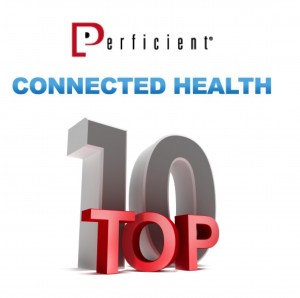 We’ve rounded the bend on our countdown of the Top 10 Trends in Connected Health in 2014. You may be surprised to know that this is the first time a government propelled trend has been mentioned on this countdown. Here it is:
We’ve rounded the bend on our countdown of the Top 10 Trends in Connected Health in 2014. You may be surprised to know that this is the first time a government propelled trend has been mentioned on this countdown. Here it is:
Trend #5: The Meaningful Use Timeline Shift
I like to refer to this trend as the “shiny object”. It seems to me that any time discussions of consumer engagement arise, everyone defers to Meaningful Use Stage 2, and the patient portal is prescribes, for the answers. Don’t get me wrong, enabling patients with the ability to view and download their medical record is great. I just don’t believe it is all that groundbreaking. If you consider the entire patient digital experience, the patient portal is all the way at the tail end. Then, if you only use the metrics and means described in Phase 2, your ability to engage consumers on the portal is still very limited.
With all of that being said, as we are all well aware, the timeline is now delayed. The Centers for Medicare and Medicaid Services has added a third year to Stage 2 of the EHR meaningful use program and has delayed the start of Stage 3 until 2017. Under the revised timeline, Stage 2 will be extended through 2016 and Stage 3 will begin in 2017 for those providers that have completed at least two years in Stage 2. It is now expected that in fall of 2014 CMS will release a notice of proposed rulemaking for Stage 3 along with the 2017 Edition of the ONC Standards and Certification Criteria, which will outline more details of the new timeline. The final rule, with all requirements for Stage 3, would follow in the first half of 2015.
Great more time to get engaged with consumers, right?
Not so much. As it stands now, approximately 50% of hospitals in the country have some type of portal technology. The great majority of these (approximately 89% by some accounts) were or will be acquired as an add on to the already installed EHR system. The timeline delay means that the timeframe for giving patients, what I believe to be, the bare minimum in engagement is still years off.
So, how much longer will it take to get real consumer engagement on that portal? For the answer to this question I refer to a report by Frost & Sullivan that was released before the delay was announced entitled “U.S. Patient Portal Market for Hospitals and Physicians: Overview and Outlook, 2012-2017”. This report predicted growth in the patient portal market over the next five years.
“The need to fully engage patients as a member of the care team is fundamentally about encouraging individuals to become more involved with their healthcare, so they will be motivated to make behavioral changes that can positively impact their health status. That need will only grow as the healthcare system moves towards accountable care and value-based reimbursement. The importance of this movement cannot be underestimated.”
The report then categorized those EHR module patient portals as “Patient Portal 1.0.” and qualified these solutions as not being capable of providing the “advanced interoperability and functionality needed to support clinical integration, accountable care and ongoing and sustainable patient engagement.” No arguments there.
However, they also predicted a significant disruption in the years to come. The report states that as healthcare reform and transformation advances, providers will seek new ways to engage patients and influence behavior using connected health and will increasingly look for more advanced solutions that are proven to consistently motivate sustained behavioral change. These solutions are referred to as “Patient Portal 2.0,” and will rely on functions like health information exchange across diverse care settings, integration of clinical and financial data, dynamic scheduling, social collaboration, gaming, avatars for personalized health coaching, and virtual visits.
The report estimates that this new era of patient engagement will make its way to reality between 2015 – 2017.
The Meaningful Use Timeline Catch
As we move towards the holy grail patient portal described in the Frost & Sullivan report, the data points they used in their analysis need to be understood. They specifically mention the Stage 2 requirements as a major factor in this trend along with accountable care and consumer demand. One can extrapolate from these criteria that the delay in Meaningful Use Stage 2 also denotes a delay in their original forecast for Patient Portal 2.0 as well. Using my very best back of the napkin estimates, I believe this will mean true patient engagement behind the firewall will finally become a reality somewhere in the middle of 2016 – 2019.
Once that time finally arrives, I’ll be there with bells on (as some say).
- Connected Health Trend #10: M&A Meets Consumer Engagement
- Connected Health Trend #9: The Connected Enterprise
- Connected Health Trend #8: Sharing Notes with Patients
- Connected Health Trend #7: Care Knows No Bounds
- Connected Health Trend #6: Evolution of Social Media
- Connected Health Trend #5: The Meaningful Use Timeline
- Connected Health Trend #4: Reaching the Mobile 91%
- Connected Health Trend #3: Moving Beyond “Sick Care”
